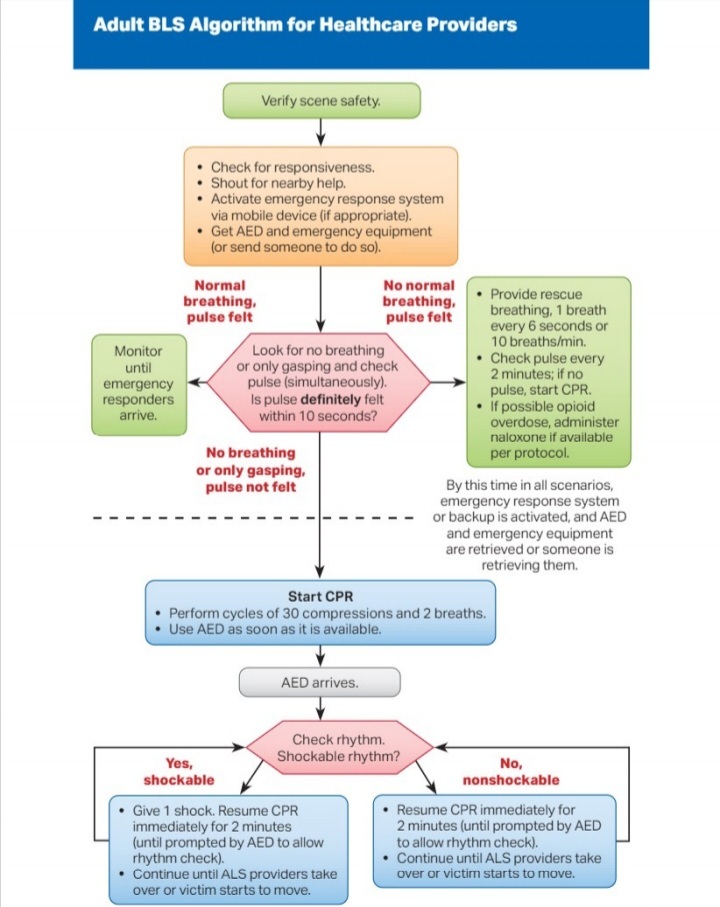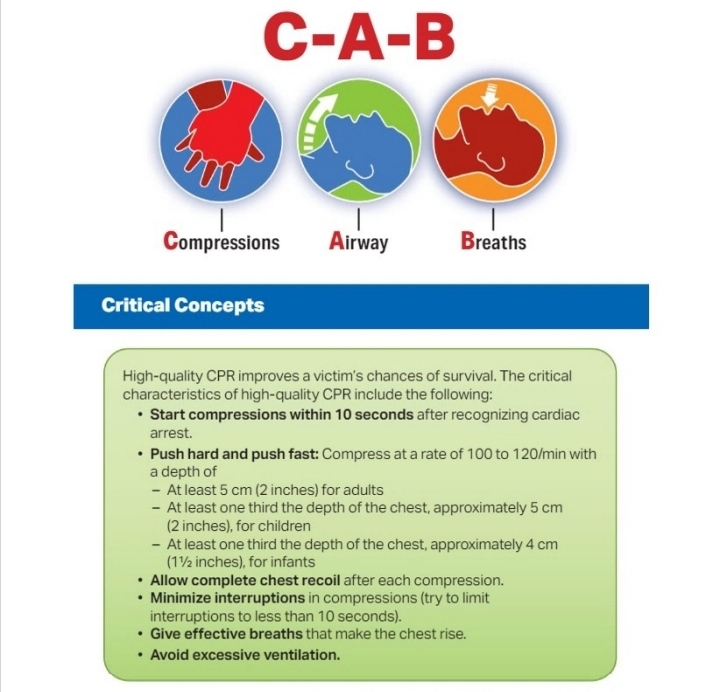(Images can be enlarged if needed)

Cardiac arrest, also known as Sudden Cardiac Arrest, is when the heart stops beating suddenly. The lack of blood flow to the brain and other organs can cause a person to lose consciousness, become disabled or die if not treated immediately.
The terms ‘heart attack’ and ‘cardiac arrest’ are often used interchangeably, but these are two different heart conditions.
A heart attack occurs when there is a blockage in the arteries that stops blood flow in the heart. Due to the lack of blood and oxygen flowing in the heart, the heart muscle tissue will become damaged. Heart attacks can increase the risk for cardiac arrest because heart attacks can alter electrical signals in the heart.
CPR – or Cardiopulmonary Resuscitation – is an emergency lifesaving procedure performed when the heart stops beating. Immediate CPR can double or triple chances of survival after cardiac arrest.
If someone experiences cardiac arrest, they need immediate treatment to increase the flow of oxygen-rich blood to their organs. CPR is the compression over the chest to manually pump a patients heart. Rescue breaths are preformed to provide oxygen to the body.
During CPR, proper hand placement on the lower half of the sternum is crucial. Placing hands over the sternum ensures effective chest compressions directly above the heart, optimizing blood circulation throughout the body.
According to the American Heart Association (AHA), the overall survival rate for out-of-hospital cardiac arrest is around 10%. However, survival rates can be improved if bystander CPR is started immediately. Studies have shown that bystander CPR increases the chances of survival for someone experiencing cardiac arrest. In fact, the AHA reports that survival rates increases to 40% or higher when bystander CPR is performed promptly. The surival rate is between 24% and 40% for those that happen in the hospital, according to the report published online in the Emergency Medicine Journal.
CPR is preformed between 100 - 120 beats per minute. Famously Staying Alive by the Bee Gees is the same beat. A large list of songs with the correct BPM can be found here
 The American Red Cross gives the following list of steps to asses if CPR is needed and how to preform:
The American Red Cross gives the following list of steps to asses if CPR is needed and how to preform:
1 CHECK the scene for safety, form an initial impression and use personal protective equipment (PPE)
2 If the person appears unresponsive, CHECK for responsiveness, breathing, life-threatening bleeding or other life-threatening conditions using shout-tap-shout
3 If the person does not respond and is not breathing or only gasping, CALL 9-1-1 and get equipment, or tell someone to do so
4 Kneel beside the person. Place the person on their back on a firm, flat surface
5 The American Red Cross CPR guidelines recommend 100 to 120 chest compressions per minute, 30 at a time. Remember these five points:
Hand position: Two hands centered on the chest
Body position: Shoulders directly over hands; elbows locked
Compression depth: At least 2 inches
Rate of compressions: 100 to 120 per minute
Allow chest to return to normal position after each compression
6
Give 2 breaths
Open the airway to a past-neutral position using the head-tilt/chin-lift technique Pinch the nose shut, take a normal breath, and make complete seal over the person’s mouth with your mouth. Ensure each breath lasts about 1 second and makes the chest rise; allow air to exit before giving the next breath Note: If the 1st breath does not cause the chest to rise, retilt the head and ensure a proper seal before giving the 2nd breath If the 2nd breath does not make the chest rise, an object may be blocking the airway
7 Continue giving sets of 30 chest compressions and 2 breaths. Use an AED as soon as one is available! Minimize interruptions to chest compressions to less than 10 seconds.
Sources:
https://www.hopkinsmedicine.org/health/conditions-and-diseases/cardiac-arrest
https://cpr.heart.org/en/resources/cpr-facts-and-stats
https://www.mycprcertificationonline.com/blog/cpr-success-rate
Instructional images from the AHS Basic Life Support Manual (2020)
Join our public Matrix server! https://matrix.to/#/#tracha:chapo.chat
As a reminder, be sure to properly give content warnings and put sensitive subjects behind proper spoiler tags. It's for the mental health of not just your comrades, but yourself as well.
Here is a screenshot of where to find the spoiler button.



It's more being able to process your emotions and then express yourself, like voice what you have processed.
Your emotions aren't silly, they are what matter to you and what you feel in a given moment. But some emotion can be hard to deal with for some people be it anger or sadness or other emotions, some people have trouble as it can be a lot of emotion at once and that sometimes can be hard to regulate for a neurodiverse person. This can be an outburst or meltdown or withdrawl it can vary greatly. It's learning how to process emotions for the individual to then be able to talk about it that can be the hard part.
Getting to the stage of being able to talk about them freely can also be difficult.
I have trouble expressing myself to people because of trauma, I wasn't allowed to growing up or didn't have the opportunity to but now I'm older and have the opportunity to and want to I struggle with it. I need prompts to infodump or discuss things in depth because I haven't had that in my life, I never had the opportunity to just say what's going on with me so I feel awkward and struggle to talk, it's distressing to try to do it for me, and a lot of forcing myself to and I hate it.. It makes me distressed even to think about talking about how I feel or even just to talk about myself, and it's what holds me back with most relationships. I have spent so much time by myself and in my own head that nearly everything is internal and I find it hard to voice it.
Most problems for you aren't exactly the same problems for other people as in severity but people should be willing to hear you out and offer advice if you feel you can talk to them.
I feel like I have no idea at what point I'm supposed to involve other people?
Like, I'd tell someone every single thing in my head if they let me. I know my story and can tell it in great detail. I need to be prompted too, because the flip side of that is that I won't say a word about it to anybody until I feel like I have the space to do so.
Until someone asks "what happened", I feel zero sense of obligation or drive to say anything of substance. How can I?
I look at it if I'm struggling with something, like sad feelings or feeling upset or something I would air it then. It doesn't have to be everything, maybe what is on your mind.
I understand how you feel, I think if they're at the stage where you can open up a little to them, choosing by priority or how much it's affecting you is a good starting point.